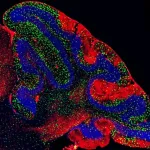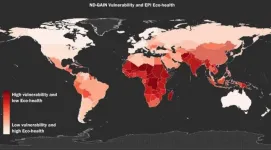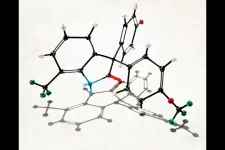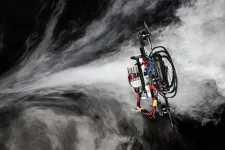A history of African dust
UM led study chronicles the important research on African dust transport across North Atlantic
2021-07-21
(Press-News.org) In a recently published paper, a research team, led by University of Miami (UM) Rosenstiel School of Marine and Atmospheric Science Professor Emeritus Joseph M. Prospero, chronicles the history of African dust transport, including three independent "first" discoveries of African dust in the Caribbean Basin in the 1950s and 1960s.
Every year, mineral-rich dust from North Africa's Sahara Desert is lifted into the atmosphere by winds and carried on a 5,000-mile journey across the North Atlantic to the Americas. African dust contains iron, phosphorus and other important nutrients that are essential for life in marine and terrestrial ecosystems, including the Amazon Basin. Wind-borne mineral dust also plays an important role in climate by modulating solar radiation and cloud properties.
The researchers also discuss the discovery in the 1970s and 1980s of the link between dust transport and African climate following an increase in dust transport to the Caribbean due to the onset of severe drought in the Sahel. Much of today's dust research is focused on North Africa as it is Earth's largest and most persistent source of dust.
Today, Prospero, nicknamed the "father of dust," is using a system of ground stations and satellites to study the effect that the global transport from the Sahara has on the atmospheric composition above the Caribbean.
INFORMATION:
The study, titled "The Discovery of African Dust Transport to the Western Hemisphere and the Saharan Air Layer," was published in Bulletin of the American Meteorological Society. The study's co-authors include: Anthony C. Delany and Audrey C. Delany of Eldorado Springs, Colorado; and Toby N. Carlson from Pennsylvania State University.
[Attachments] See images for this press release:

ELSE PRESS RELEASES FROM THIS DATE:
2021-07-21
BROOKLYN, New York, Weekday, Month xx, 2021 - The remarkable structural properties of the Venus' flower basket sponge (E. aspergillum) might seem fathoms removed from human-engineered structures. However, insights into how the organism's latticework of holes and ridges influences the hydrodynamics of seawater in its vicinity could lead to advanced designs for buildings, bridges, marine vehicles and aircraft, and anything that must respond safely to forces imposed by the flow of air or water.
While past research has investigated the structure of the sponge, there have been few studies of the hydrodynamic fields surrounding and penetrating the organism, and whether, besides improving its mechanical ...
2021-07-21
BROOKLYN, New York, Wednesday, July 21, 2021 - This week, at the 38th International Conference on Machine Learning (ICML 21), researchers at the END ...
2021-07-21
Efforts to understand cardiac disease progression and develop therapeutic tissues that can repair the human heart are just a few areas of focus for the Feinberg research group at Carnegie Mellon University. The group's latest dynamic model, created in partnership with collaborators in the Netherlands, mimics physiologic loads on engineering heart muscle tissues, yielding an unprecedented view of how genetics and mechanical forces contribute to heart muscle function.
"Our lab has been working for a long time on engineering and building human heart muscle tissue, so we can better ...
2021-07-21
UT Southwestern researchers have identified an immune protein tied to the rare neurodegenerative condition known as Niemann-Pick disease type C. The END ...
2021-07-21
For more than 30 years, scientists on the U.N.'s Intergovernmental Panel on Climate Change have focused on human-induced climate change. Their fifth assessment report led to the Paris Agreement in 2015 and, shortly after, a special report on the danger of global warming exceeding 1.5 degrees Celsius above pre-industrial levels. The Nobel Prize-winning team stressed that mitigating global warming "would make it markedly easier to achieve many aspects of sustainable development, with greater potential to eradicate poverty and reduce inequalities."
In a first-of-its-kind study that combines assessments of the risks of toxic emissions (e.g., fine particulate matter), ...
2021-07-21
COLUMBUS, Ohio - Exoskeletons - wearable devices used by workers on assembly lines or in warehouses to alleviate stress on their lower backs - may compete with valuable resources in the brain while people work, canceling out the physical benefits of wearing them, a new study suggests.
The study, published recently in the journal Applied Ergonomics, found that when people wore exoskeletons while performing tasks that required them to think about their actions, their brains worked overtime and their bodies competed with the exoskeletons rather than working in harmony with them. The study indicates that exoskeletons may place enough burden on the brain that potential benefits to the body are negated.
"It's almost like dancing with a really bad partner," said ...
2021-07-21
CHAMPAIGN, Ill. -- A new approach to treating breast cancer kills 95-100% of cancer cells in mouse models of human estrogen-receptor-positive breast cancers and their metastases in bone, brain, liver and lungs. The newly developed drug, called ErSO, quickly shrinks even large tumors to undetectable levels.
Led by scientists at the University of Illinois Urbana-Champaign, the research team reports the findings in the journal Science Translational Medicine.
"Even when a few breast cancer cells do survive, enabling tumors to regrow over several months, the tumors that regrow remain completely ...
2021-07-21
Unlike the rest of the body, there is not enough real estate in the brain for stored energy. Instead, the brain relies on the hundreds of miles of blood vessels within it to supply fresh energy via the blood. Yet, how the brain expresses a need for more energy during increased activity and then directs its blood supply to specific hot spots was, until now, poorly understood.
Now, University of Maryland School of Medicine and University of Vermont researchers have shown how the brain communicates to blood vessels when in need of energy, and how these blood vessels respond by relaxing or constricting to direct blood flow to specific brain regions.
In their new paper, published on July 21 in Science Advances, ...
2021-07-21
Every year, Santa Ana Winds drive some of the largest wildfires in Southern California during autumn and winter, and a new analysis of 71 years of data suggests that the total amount of land burned is determined more by wind speed and power line ignitions than by temperature and precipitation. The findings suggest that maintaining utility lines and carefully planning urban growth to reduce powerline ignitions may help to reduce future losses from Santa Ana-driven autumn and winter fires, which occur far less frequently than summer fires but account for the largest blazes annually. While California's summer fires are typically driven by an abundance of fuels such as dry twigs and logs, and are often ignited by lightning in remote areas, the state's autumn and winter fires are typically ...
2021-07-21
To be useful, drones need to be quick. Because of their limited battery life they must complete whatever task they have - searching for survivors on a disaster site, inspecting a building, delivering cargo - in the shortest possible time. And they may have to do it by going through a series of waypoints like windows, rooms, or specific locations to inspect, adopting the best trajectory and the right acceleration or deceleration at each segment.
Algorithm outperforms professional pilots
The best human drone pilots are very good at doing this and have so far always outperformed autonomous systems in drone racing. Now, a research group at the University of Zurich (UZH) has created an algorithm that can find the quickest ...
LAST 30 PRESS RELEASES:
[Press-News.org] A history of African dust
UM led study chronicles the important research on African dust transport across North Atlantic




